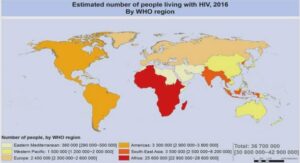Hydrodynamic lubrication
The main characteristic of hydrodynamic lubrication is that the load is entirely carried by the lubricant film while the mating surfaces are completely separated by the lubricant film. This lubrication regime prevents contacts between solid surfaces. As for the elastohydrodynamic regime, in hydrodynamic lubrication, the motion of the mating surfaces plays the main role in the lubricant flow. In industry, most contacts are lubricated to control friction and wear. In real applications, such as cylinder liners, piston rings, rolls, and machine tools, contacts operate in a specific lubrication regime. To optimize the contact regarding friction, on the one hand, and lifetime, on the other hand, it is necessary to predict the lubrication regime in which such contacts operate (Gelinck & Schipper, 2000).
In lubricated sliding, the friction coefficient during lubrication is potentially influenced by sliding speed, mean contact pressure or normal load, and dynamic viscosity. In the lubrication theory, these three quantities often appear in a single quantity called the Sommerfeld number (𝜂𝑈⁄𝑝) where 𝜂, 𝑈, and 𝑝 correspond to viscosity, velocity and pressure respectively (Gelinck & Schipper, 2000). Experiments on the lubrication of material surfaces as a function of the Sommerfeld number often reduce to the Stribeck curve (Figure 0.2). Plotting the Stribeck curve is still a convenient method for examining the effect of important variables of sliding speed and normal load to indicate lubrication mechanisms and predict the lubrication regime. EHL friction, sometimes called traction, is important as it is directly associated with machine components performance, efficiency, and energy consumption. This thesis focuses on EHL condition. In the analysis of the interaction between mating surfaces, two types of contact can be observed, namely conforming contacts and nonconforming contacts. For the conformal case, the curvatures fit closely together, and the contact area is large before any deformation. On the other hand, in non-conformal contact, the curvatures of the surfaces do not match, and the contact area is small, and the contact pressure and stresses are therefore highly concentrated. (Figure 0.3) EHL mainly appears between nonconformal surfaces.
Although an efficient lubrication regime protects from adhesive and abrasive wear, contact fatigue remains inevitable. Contact fatigue results in micro-pitting and pitting (Guilbault & Lalonde, 2019). This mechanism takes place due to cyclic loadings. Figure 0.4 shows pitted gear surfaces. Based on the crack initiation location, this mode of failure is classified into two categories: surface pitting and subsurface pitting. Pits are formed in all rolling pairs but are particularly common in rolling bearings and gear transmission elements. In such cases, contact takes place under EHL conditions. Surface defects like pitting can have deleterious effects on the efficiency of lubrication. The EHL theory is a proper method to study pitting failure and its effects. Pitting fatigue has been also studied in a few works over the years. Fatigue life calculation for the pitted surfaces is well studied in the literature. The experimental methods to model surface roughness in EHL conditions, such as light interferometry, have some limitations and difficulties, which is beyond the scope of this thesis.
The numerical methods for
simulating the topography both in dry contact and EHL conditions are, therefore, more popular. In dry contact condition, the friction between the mating objects plays the most important role in expediting the crack propagation. However, in EHL conditions, the lubricant may penetrate the crack and act as a wedge to form the pits (Datsyshyn & Panasyuk, 2001). In terms of surface pitting simulations, different models can be implemented. An artificial set of pits can be generated in the geometry using sinusoidal patterns (He, Ren, Zhu, & Wang, 2014). Also, a fast Fourier transform (FFT) can be employed to estimate the surface roughness and the pits (S. Liu, Wang, & Liu, 2000). To include more sophisticated patterns, some researchers tended to use two-dimensional (2D) models. Generally, modeling the line contact problem is a 2D problem. However, since the topography of the surface, i.e. the pits and cracks, is three-dimensional (3D), the whole formulation should be 3D to include the effect of the topography (Zhu, Wang, & Ren, 2009).
Literature review
During the years, several researchers have studied the EHL for different contact surfaces. As the pioneers, Grubin and Vinogradova (1949) investigated EHL theory by considering both elastic deformation and viscosity-pressure effect of the lubricant. Their model describes the mechanical behavior of the mating surfaces assuming that the elastic strain in the loaded region is equal to that of the dry contact problem. Dowson & Higginson (1967) presented a solution for highly loaded line contacts under EHL conditions by considering the film thickness as the dependent variable to the pressure distribution. Hamrock & Dowson (1975) investigated the EHL condition of elliptical contacts by comprehensively studying different loading conditions and material characteristics. The EHL solution process couples Reynolds equation, elasticity equations, and piezo-viscous lubricant equation leading to numerically complicated problems. Many efforts have been made to find an efficient numerical solution of EHL problems. Different numerical approaches such as direct method, inverse method, quasi-inverse, and system approach methods have been reviewed by Hamrock and Tripp (1984). They presented the advantages and disadvantages of each approach. Okamura (1983) used the Newton-Raphson method to solve the system of finite element equations in the EHL problem.
Their results mainly describe the lightly loaded EHL problems. Solutions for highly loaded cases were investigated by Houpert and Hamrock (1986) using adaptive non-uniform meshes to solve the EHL equations. In contrast to practical elements with a finite length such as gears and roller bearings, their solution was limited to infinite line contacts or point contact geometries. (KURODA, S., & ARAI, 1985) combined the finite difference and Newton-Raphson methods to solve the EHL problem for the finite cylindrical rollers. (Park & Kim, 1998) also provided a numerical solution of the EHL problem for the finite line condition. (Najjari & Guilbault, 2014) studied finite line thermal EHL problems for profiled rollers. They considered different roller profile corrections such as chamfered corners, rounded edges, and logarithmic profiles to investigate the edge contact effect on the pressure distribution and the lubricant film thickness. In the case of experimental studies, (Wymer & Cameron, 1974) tested finite line contacts under the EHL condition. (Mostofi & Gohar, 1983) considered rollers with profiled edge under EHL conditions.
Their investigations were, however, limited to low or moderate loads. (Masjedi & Khonsari, 2015) and (Olver & Dini, 2007) independently investigated the effect of surface properties such as roughness on the film thickness and pressure distribution. (Zhu, Ren, & Wang, 2009) used a 3D line contact EHL to predict the gear pitting fatigue life. Using the mixed EHL condition, (Li & Kahraman, 2013) studied the pitting failure modes. (Chue & Chung, 2000) investigated the mechanism of pitting caused by rolling contact using the fracture mechanics approach. They stated that the initial crack and its orientation, indentation force, friction, hydraulic pressure in the crack, and strained-hardened surface layer have critical effects on the pit formation. (Keer & Bryant, 1983) evaluated fatigue lives for rolling/sliding Hertzian contacts using a two-dimensional fracture mechanics approach. They assumed that the crack initiation life is small in comparison to the crack propagation life. (Fajdiga, Glodež, & Kramar, 2007) presented a computational model for the simulation of surface-initiated fatigue crack growth in contacting mechanical elements. As stated before, surface contact failures are very common and much effort has been made to investigate the problem, but progress has been limited due to the complexities in understanding the mechanism of surface pitting effects and the lack of effective ways to estimate friction. Hence, a comprehensive model to investigate the effects of such a surface failure on friction coefficient and contact pressures is needed.
INTRODUCTION |





